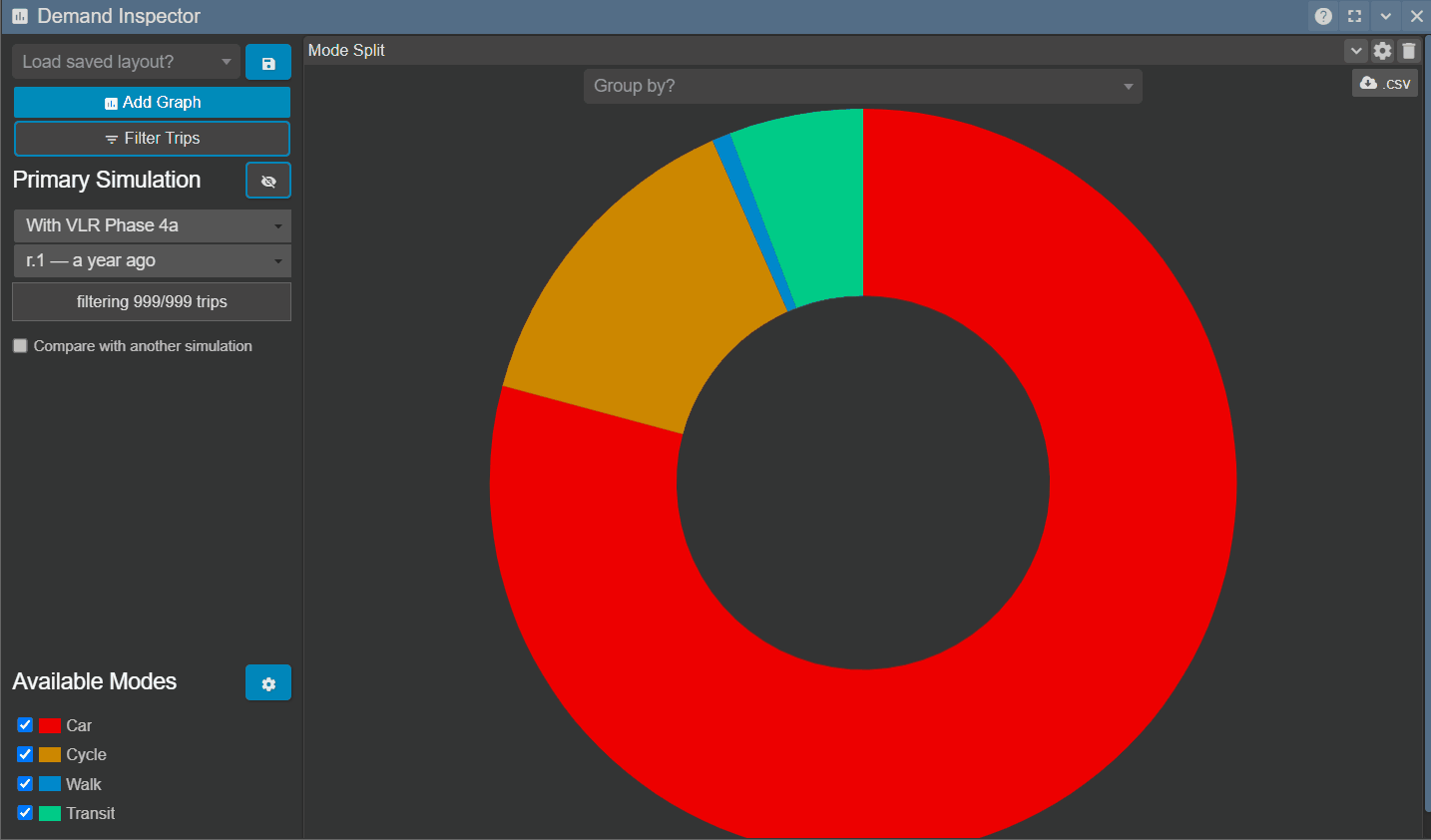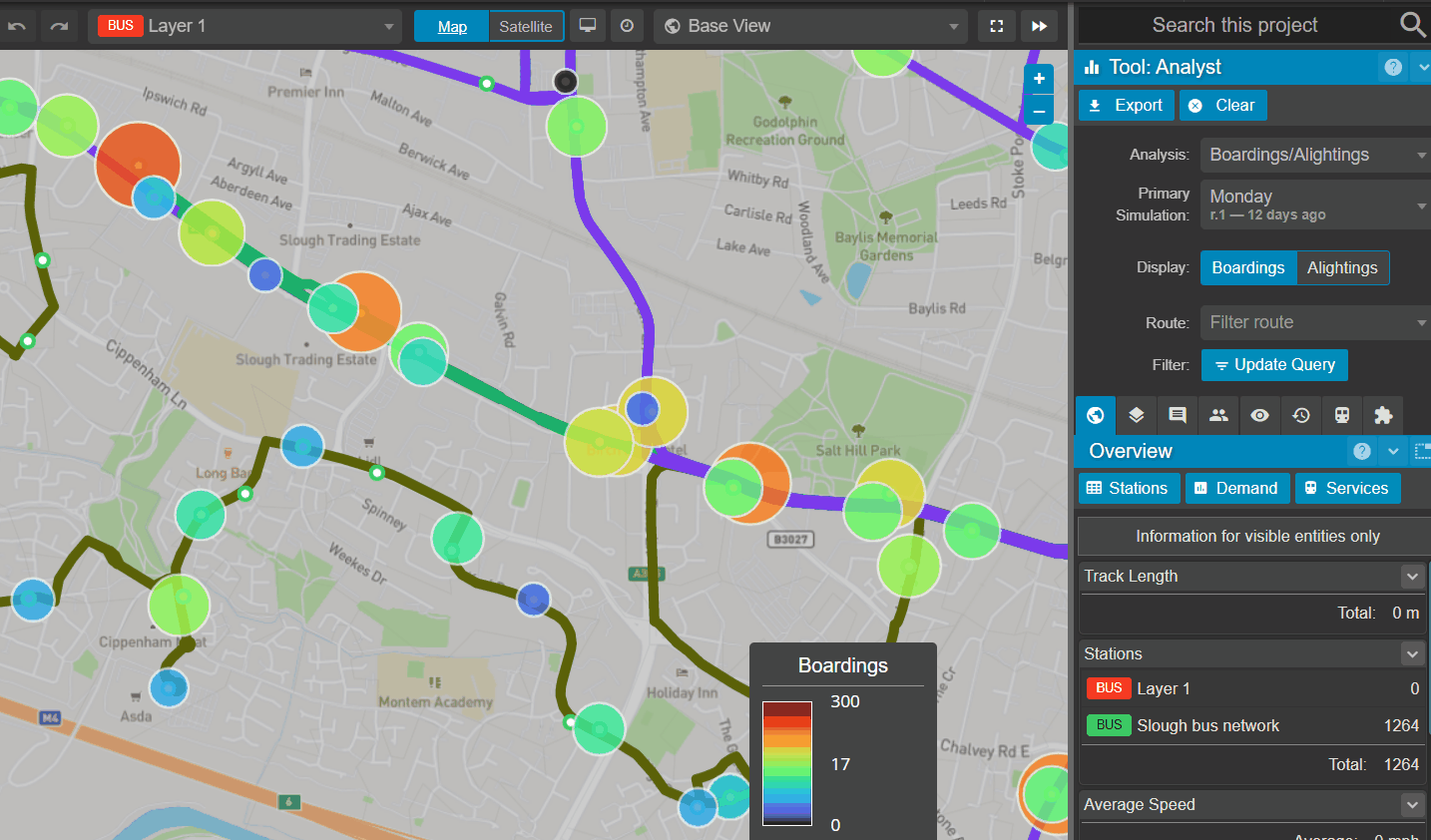
In our last blog post, we looked back on our recent, in-person workshop at the Transport Practitioners Meeting in London, where we discussed the planning and analysis of equitable bus services. The 2022 TPM meeting was one of a number of conferences that we had the opportunity to attend over the last few months, with UK transport events now back in full swing after a long period of pandemic related interruption.
Back in June, we attended Modelling World 2022, in Birmingham, England, at what its organisers have described as an unprecedented time in data and modelling history. The event sought to address the unique and combined challenges of pandemic response, climate change mitigation and the disruption of the transport, social and economic trends that have informed modelling in recent years. It brought together experts from Europe and the UK (as well as a smaller number of international attendees) to meet, network and discuss topics such as the future of modelling, new uses for big data, and the use of active and shared modes.
The event's interactive session on the future of modelling explored some of the challenges faced by its end users, real-world challenges, and the opportunities that exist for innovation through emerging technological improvement. Modelling today remains a comparatively small profession - in the UK, exact numbers are difficult to determine but are likely between 1000 and 2000. Within that number exist smaller subcategories of specialisms (appraisal specialists, demand modellers, highway modellers, etc…).
In order to better understand the typical modeller, the session's organisers surveyed those in attendance, asking what skills they valued, how their time is spent, and how they think their time should be spent. For those polled, the most important skillsets were felt to be problem-solving/consultancy, and mathematics/analysis. Demand and multimodal modelling is where the majority spent their time, and largely where they feel their time is best spent (as well as in data science and innovation).
Across the conference, a number of discussions reflected a growing need for modellers to challenge assumptions and develop more radical approaches, not least by questioning the familiar recommendation derived from modelling software that road building is the desirable outcome in the majority of cases. Also discussed was the need to develop approaches suitable for challenging the many uncertainties associated with transport planning. And within that, the acceptance of our limited ability to forecast. Therefore, focusing on creating robust policies (versus those that attempt to identify an ideal outcome) can help us plan for a range of futures.
This then calls for policies that are adaptable and not constrained to a single, forecasted future. And with that, tools that allow us to identify the best policies and understand the circumstances under which they might fail. To quote Charlene Rohr's talk on ‘Transport Planning in an Uncertain Future’ we need “faster running, less precise but more behaviorally rich models.”
The Podaris Approach to Rapid Demand Modelling
Generating indicative, evidence-based outputs by modelling is typically a costly and time consuming process, relying on complex and expensive desktop applications running overnight simulations. Consequently, techniques such as demand modelling are seldom a part of high-level, early-stage transport planning.
Podaris changes this by integrating rapid demand modelling directly into a collaborative cloud-based platform for multimodal transport planning and analysis. Travel demand simulations in Podaris are run entirely in the cloud, and run in seconds, not hours. With nothing to install, all that's required to create sophisticated demand models and run simulations is a web browser.
The process of setting up models is the work of moments. With Podaris, you can set up simulations using powerful GIS-like queries and easily generate graphs to visualise outputs such as:
- Mode split
- Time to destination - total or by mode
- Mode shift
- Trip count
- Transit ridership - by agency or by route
- Skim Matrices - Relevant origin/destination name can be chosen in the graph settings
- Travel speed
Multiple simulations and their graphed outputs can be compared, helping you rapidly surface insights based on a wide range of scenarios at a stage in your project lifecycle when plans are fluid.

The built-in Analyst Tool can provide further insights into your data, allowing you to visualise the outputs of your simulations on interactive maps. The tool comprises a number of functions for exploring simulation data across different areas including:
-
O/D Aggregation - to explore how properties such as journey duration and generalised cost change between different areas.
-
Winners and Losers - to understand which areas benefit and suffer from different changes based on different properties.
-
Boardings/Alightings - to view the number of boardings and alightings for the network or a specific route.

By providing tools for faster modelling, integrated into an environment that allows every aspect of transport planning to be performed through real-time collaboration, multiple scenarios can be generated and compared rapidly. Such tools make high-level demand modelling more accessible and better integrated into early stage planning than ever, and vastly lower the technical barriers to modelling for non-experts.
For a complete tour of Podaris’ capabilities and to see how demand modelling operates as just one facet of its complete multimodal transport planning platform, schedule a demo with us today.